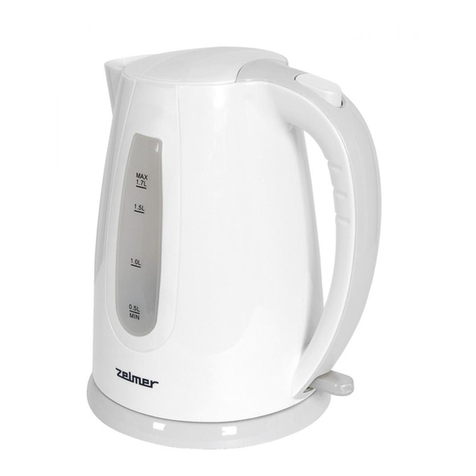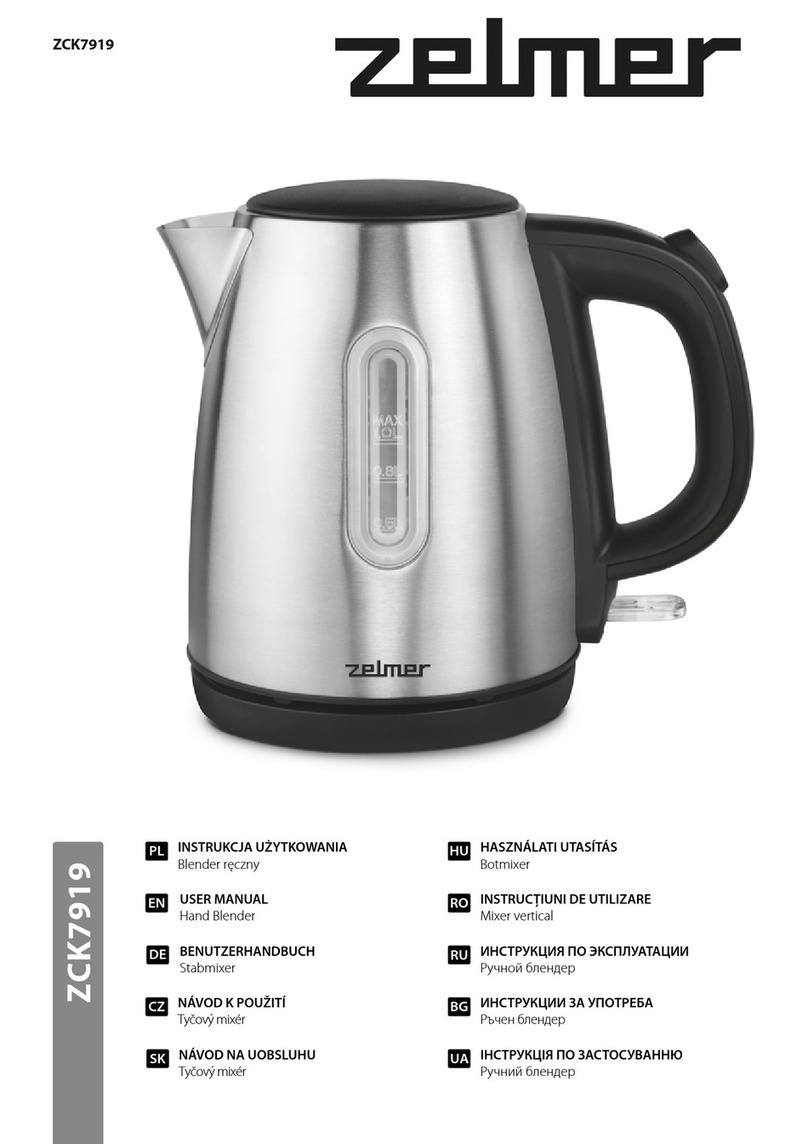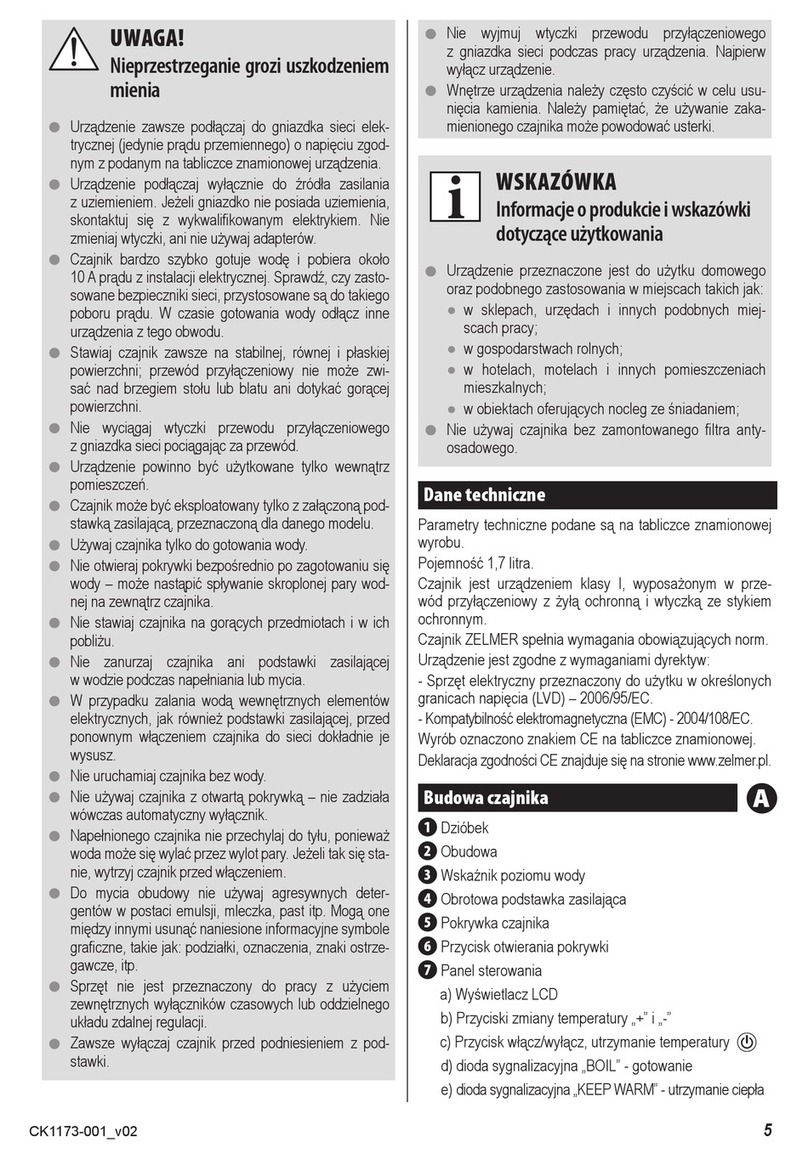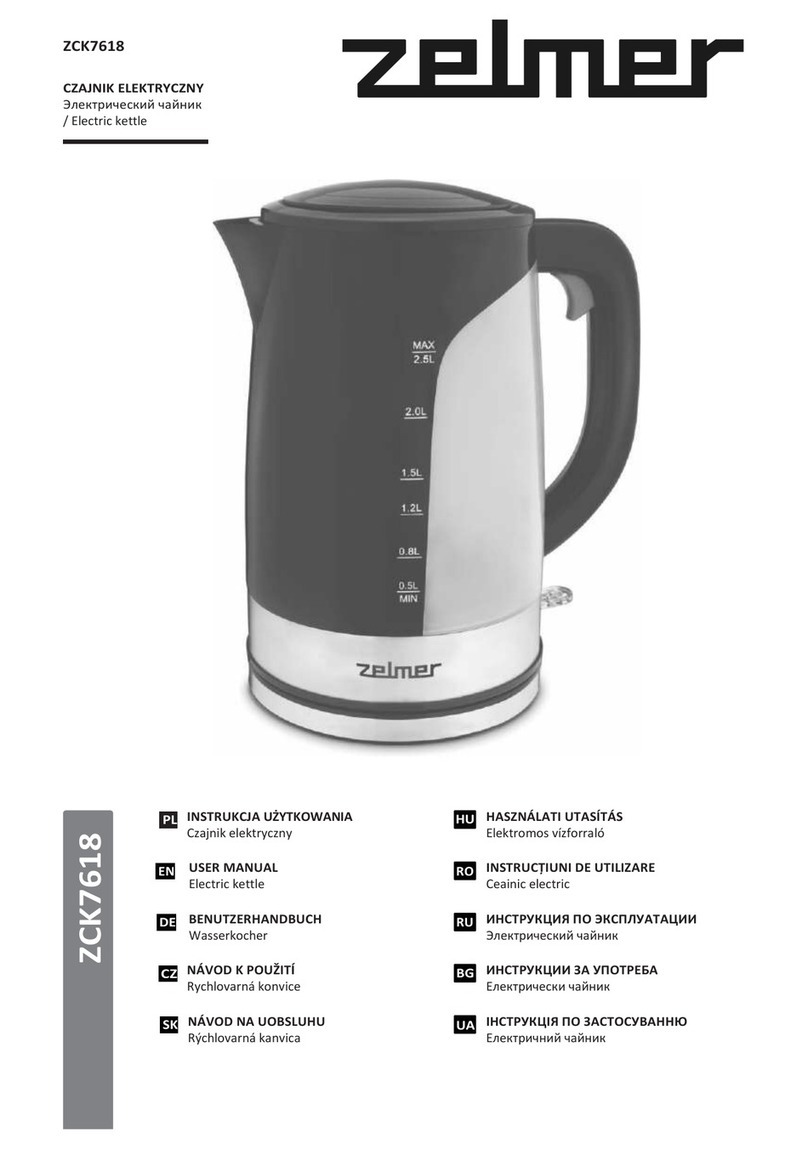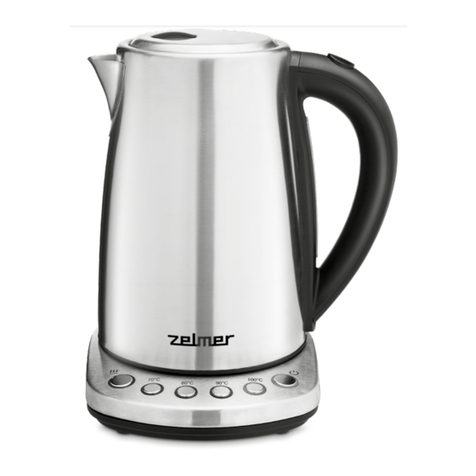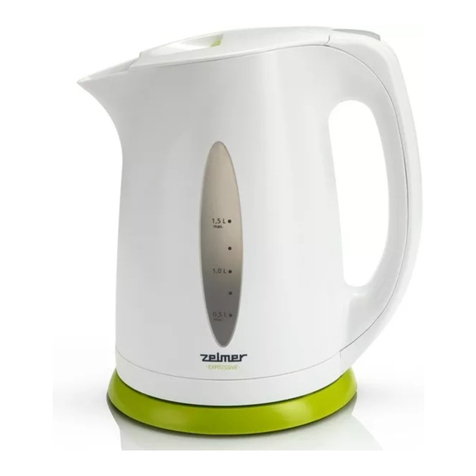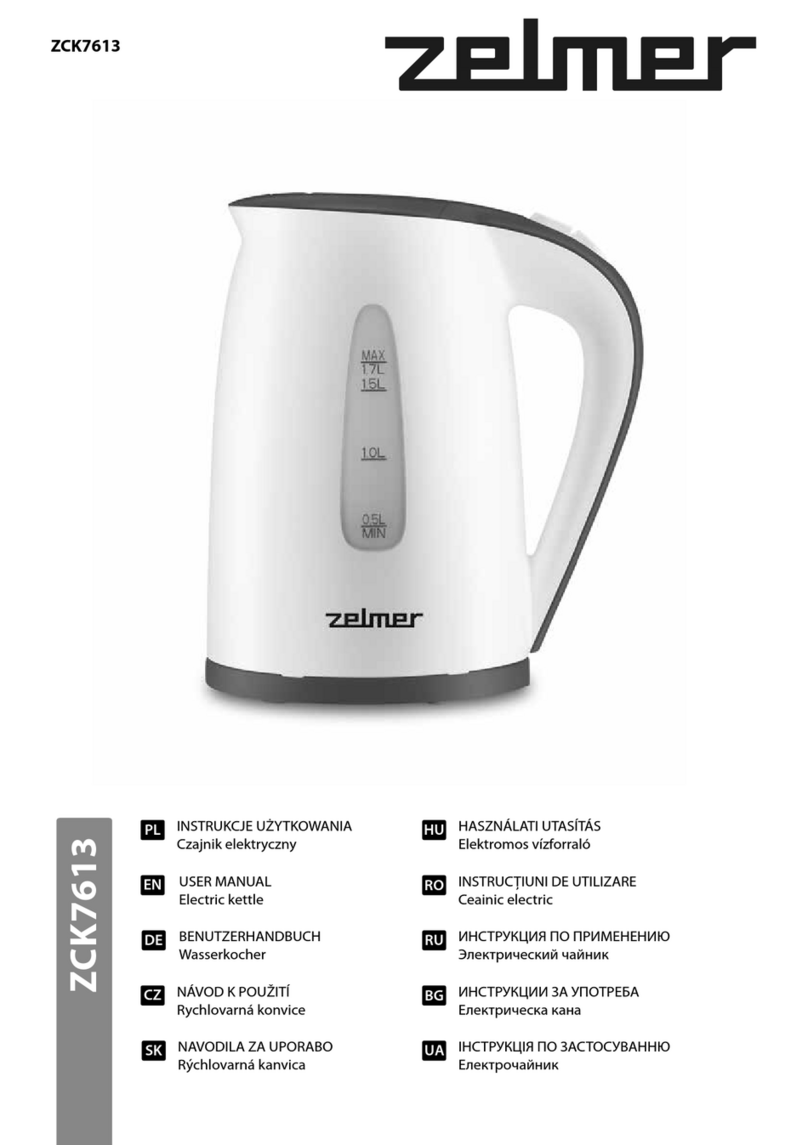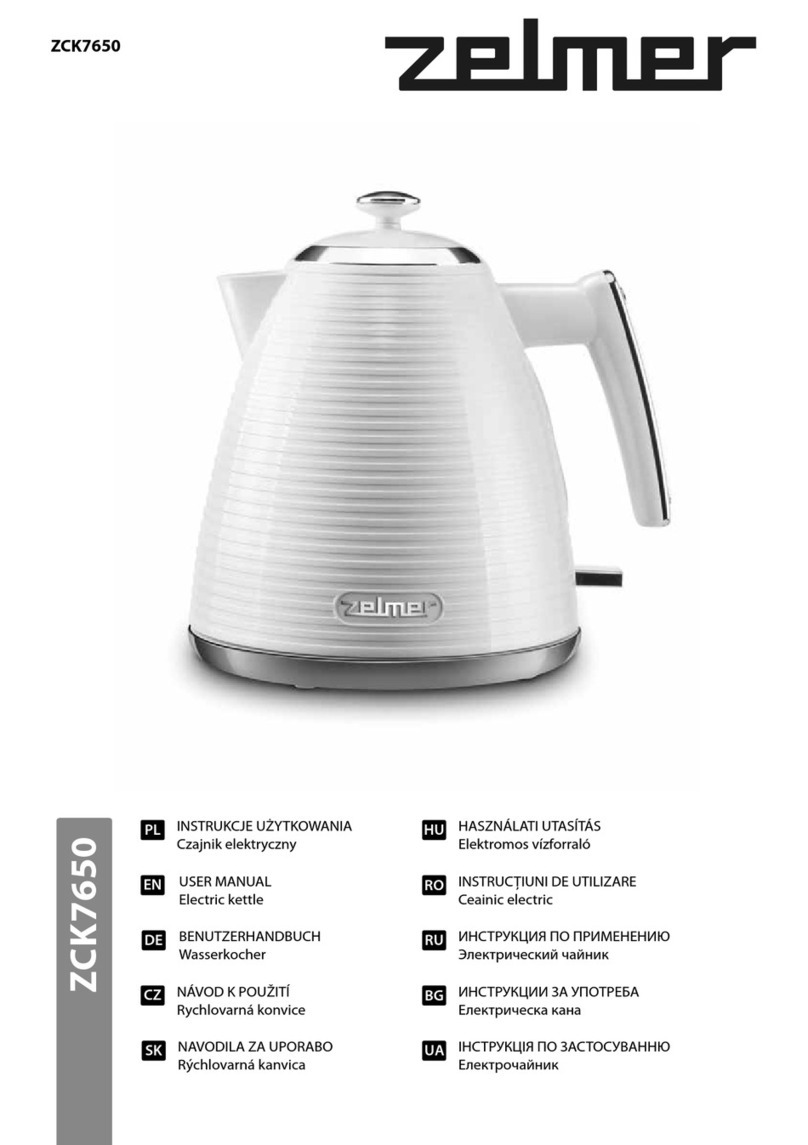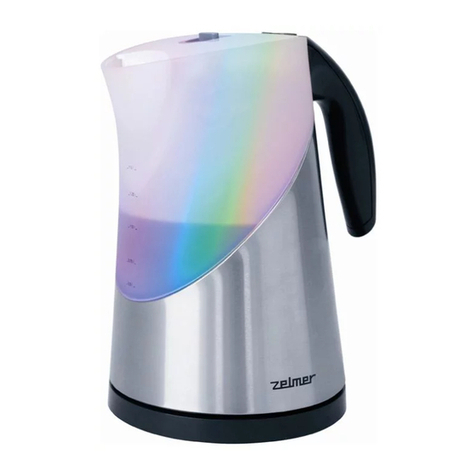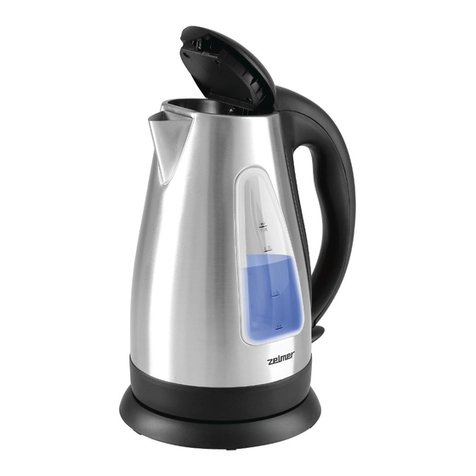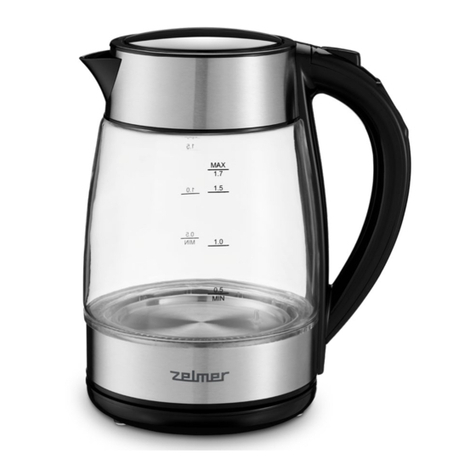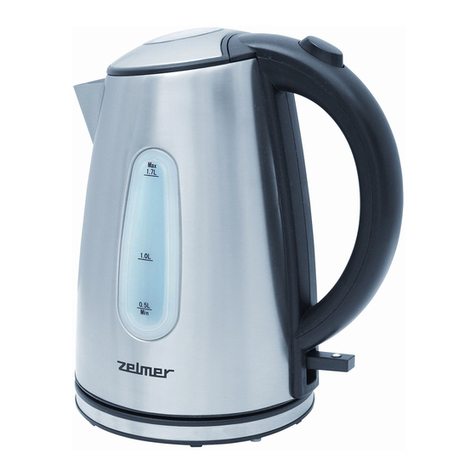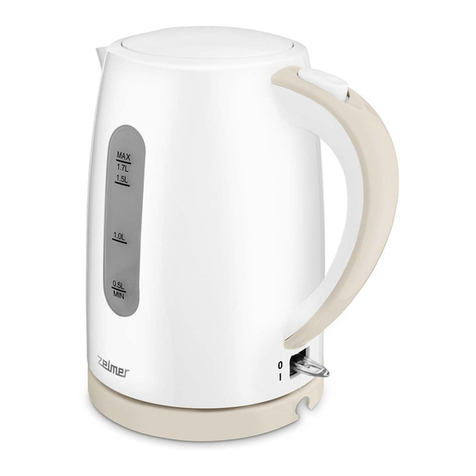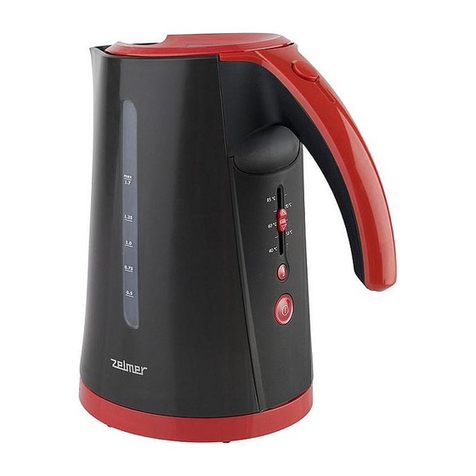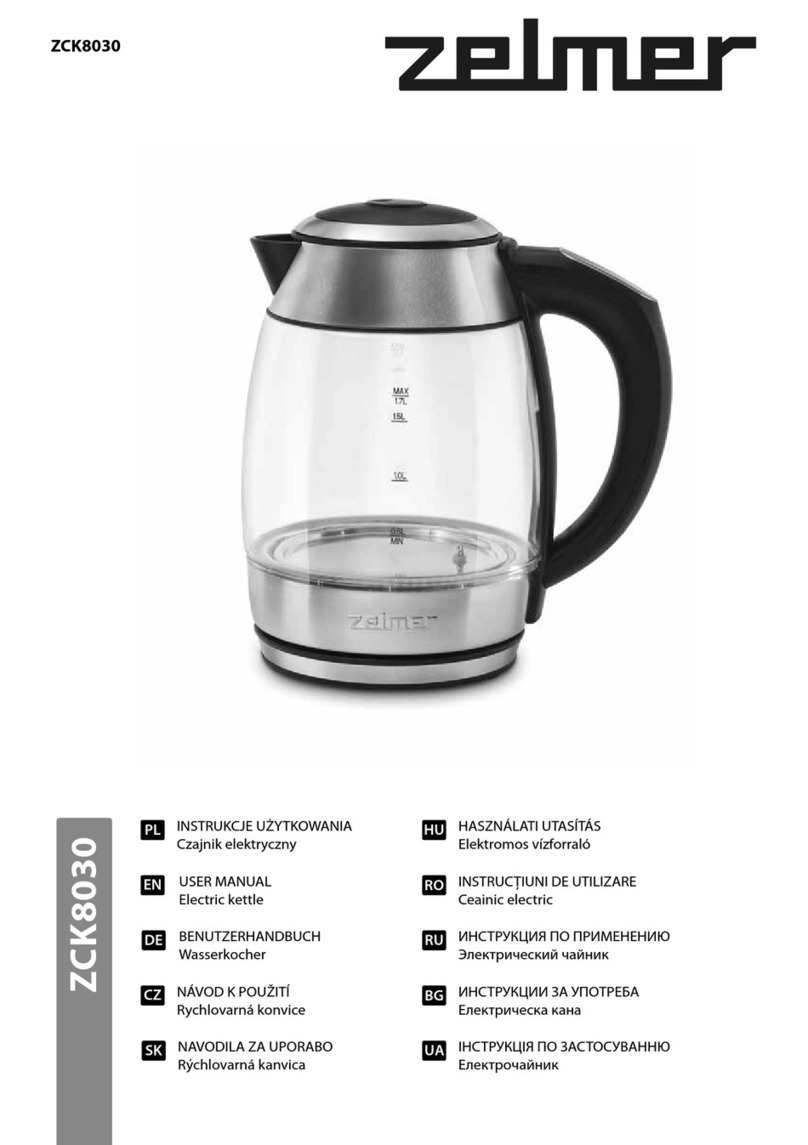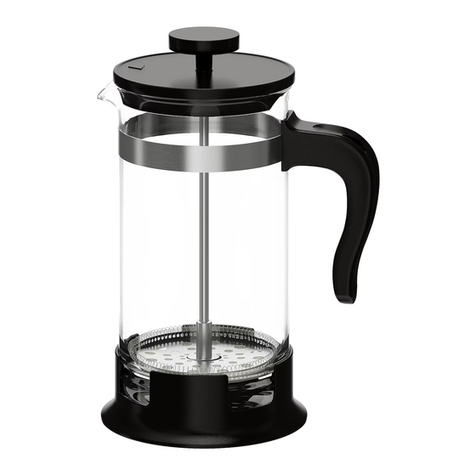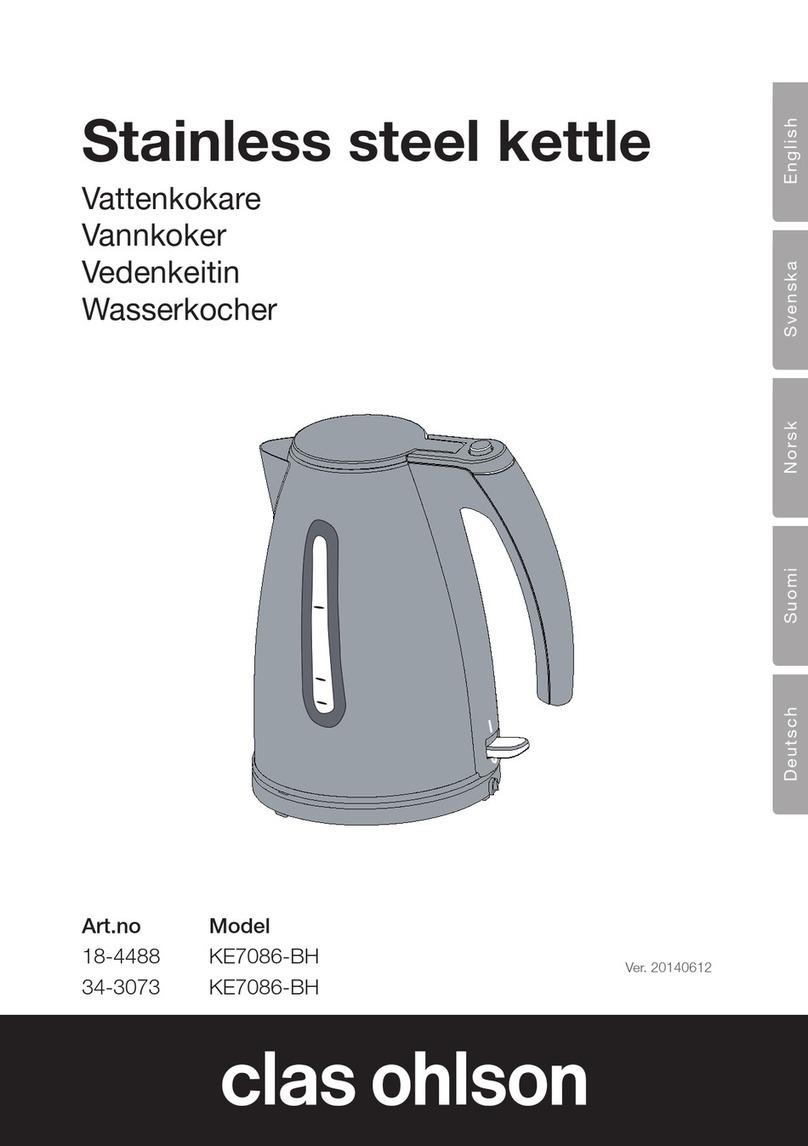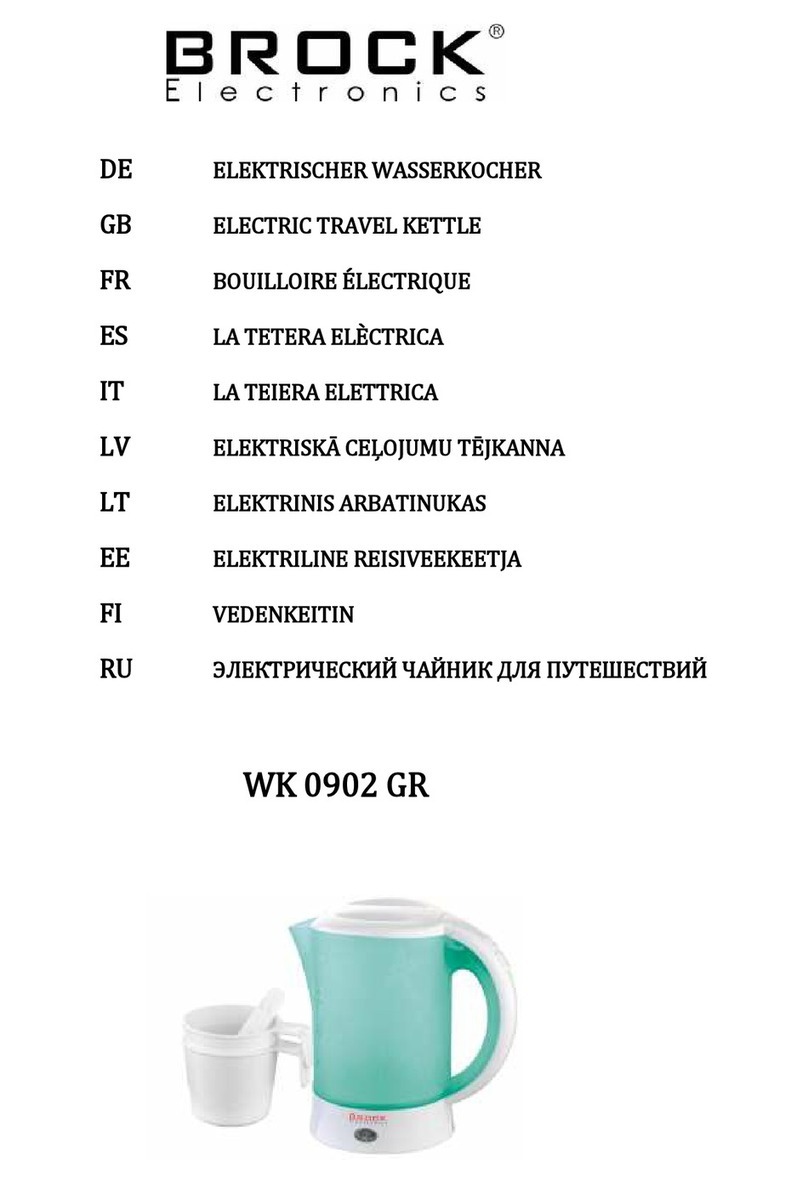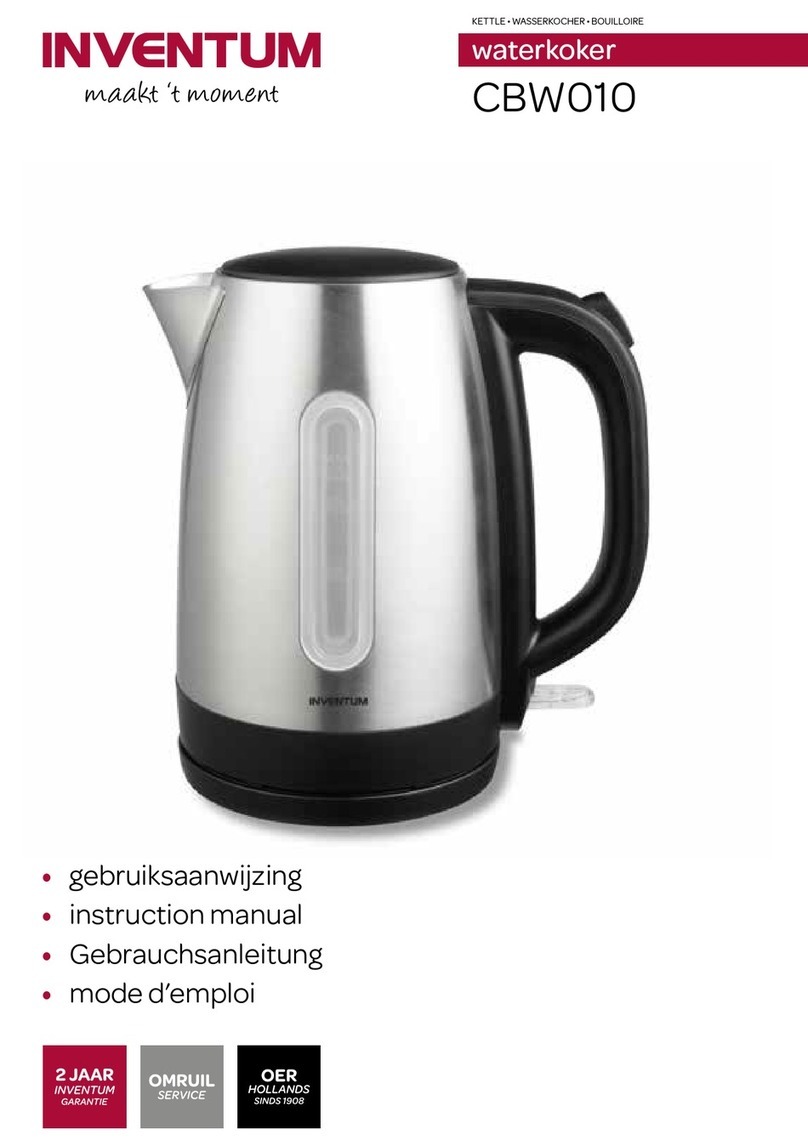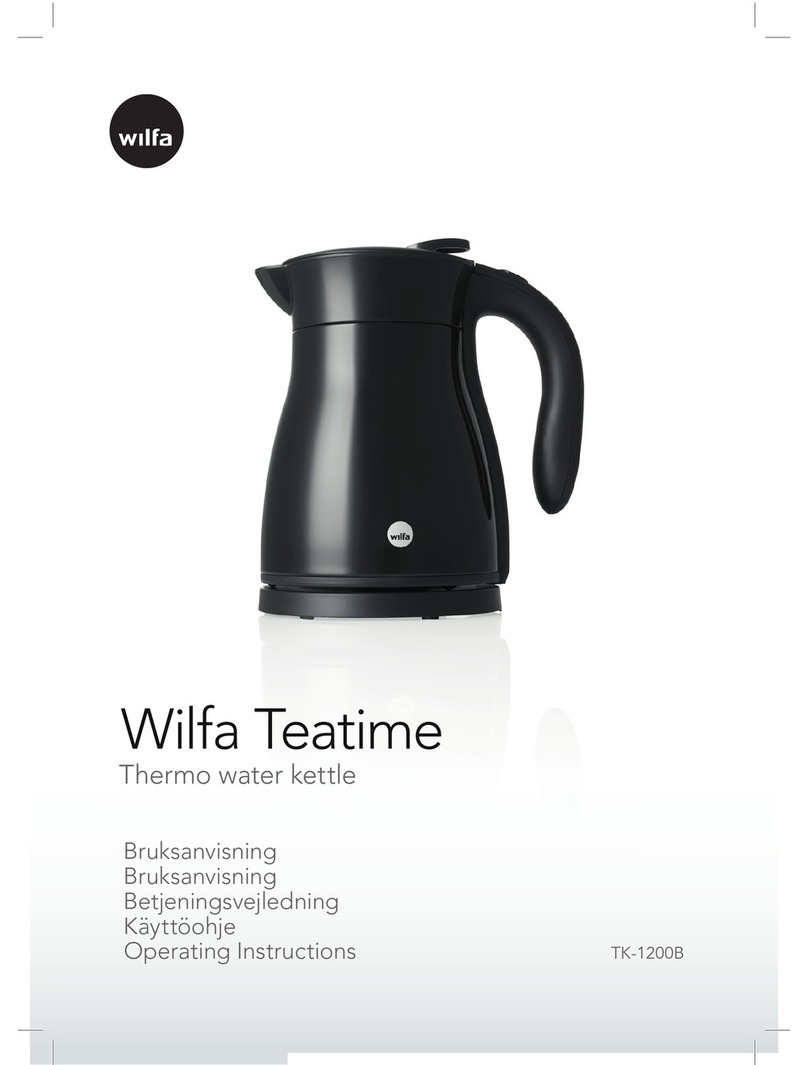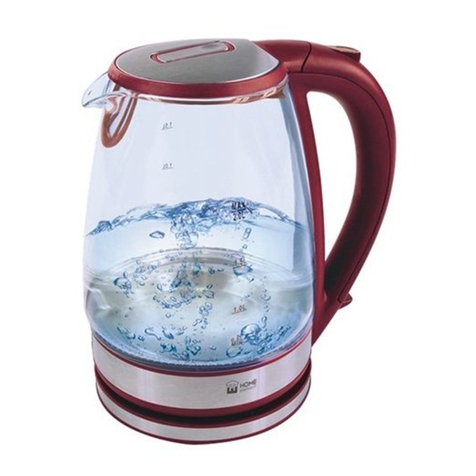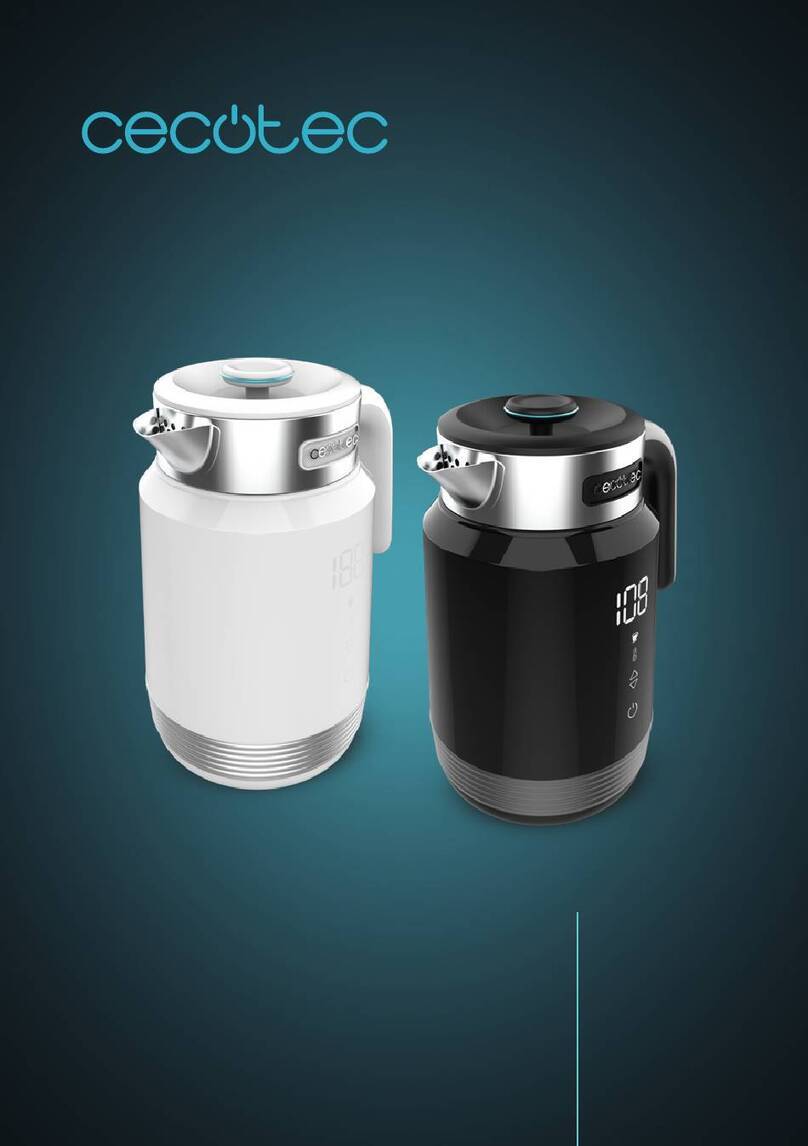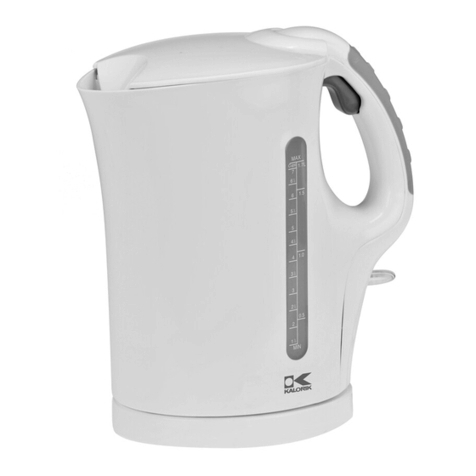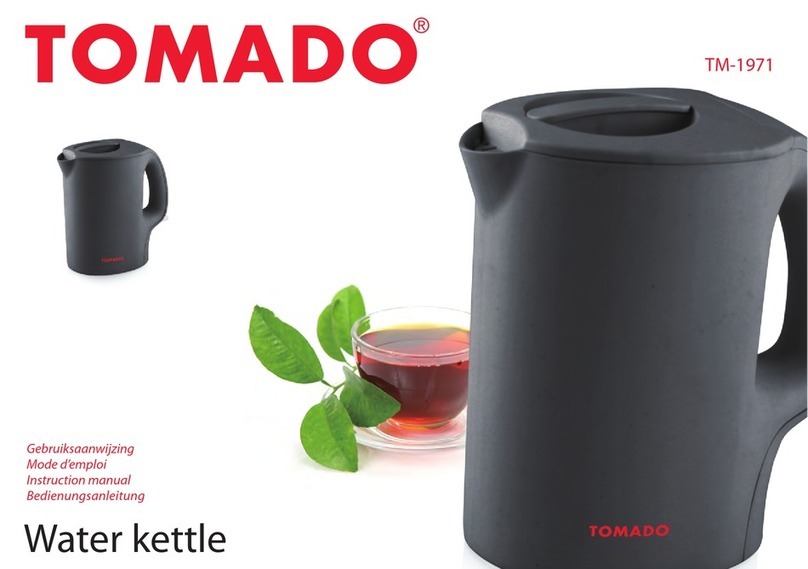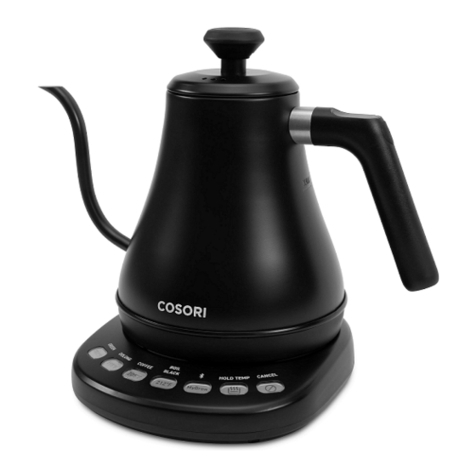
BUDOWA CZAJNIKA
Czajnik elektryczny jest urządzeniem przeznaczonym do gotowania wody. Korpus
czajnika wykonany jest z blachy chromoniklowej, natomiast uchwyt, pokrywka i podstawa
kompletna wykonane są z tworzyw sztucznych. Pracą czajnika, jego włączaniem
i wyłączaniem po przegotowaniu wody, steruje kontroler górny, który dzięki systemowi
zabezpieczeń, zapewnia bezpieczną eksploatację czajnika. U spodu korpusu czajnika
znajduje się lampka, która świeci się, gdy czajnik jest włączony. Podstawa kompletna
jest osobnym elementem służącym do doprowadzenia prądu do czajnika. Taka
konstrukcja ułatwia eksploatację czajnika, gdyż jego napełnianie, czy wylewanie z niego
wody nie wymaga wyjmowania wtyczki przewodu przyłączeniowego z gniazdka.
DEMONTAŻ CZAJNIKA
Przed przystąpieniem do pracy należy dokładnie zapoznać się z treścią niniejszej
Instrukcji serwisowej oraz Instrukcji użytkowania czajnika.
Napraw powinien dokonywać tylko odpowiednio przeszkolony pracownik serwisu.
Wszelkich napraw należy dokonywać po wyjęciu wtyczki przewodu przyłączenio-
wego z gniazdka sieci.
Demontaż czajnika typ 17Z010
Demontaż korpusu czajnika:
Demontaż należy przeprowadzić na stole pokrytym czystym filcem lub innym
miękkim materiałem, zwracając uwagę, aby nie porysować części wykonanych z
tworzywa. Zdjąć czajnik z podstawy kompletnej. Cienkim, ostro zakończonym
narzędziem wykonać w zaślepce wkrętu 9otwór, w który należy wkręcić wkręt. Ciągnąc
za wkręt, wyjąć zaślepkę wkrętu 9z zaślepki uchwytu 8. Wkrętakiem krzyżowym
wykręcić wkręt 31. Płaskim wkrętakiem podważyć zaślepkę uchwytu 8doprowadzając w
ten sposób do rozłączenia zaczepów i zdjąć ją z uchwytu 7. Otworzyć pokrywkę do
położenia pionowego. Wkrętakiem krzyżowym wykręcić dwa wkręty 37. Płaskim
wkrętakiem rozłączyć zaczep między zaślepką pokrywki 5, a zawiasem 4, podważyć
zaślepkę pokrywki 5i zdjąć ją razem z pokrywką kompletną z czajnika. Wyjąć zaślepkę
pokrywki 5z zawiasu 4. Wkrętakiem krzyżowym wykręcić cztery wkręty 38. Zdjąć
pokrywkę 1wraz ze sprężyną 2i zaczepem 3z zawiasu 4. Wcisnąć zaczep 3i wyjąć go
wraz ze sprężyną 2z pokrywki 1. Wyjąć sprężynę 2z gniazda w zaczepie 3. Palcami
odgiąć po kolei pięć zaczepów i doprowadzić do rozłączenia pierścienia 6z korpusem
kpl. 22. Wkrętakiem krzyżowym wykręcić śrubę 32 i śrubę 33. Uchwycić ręką uchwyt 7,
pociągnąć go mocno w kierunku do siebie i doprowadzić do rozłączenia z korpusem
kpl. 22. Z pierścieni uszczelniających 12 znajdujących się w korpusie kpl. 22 wyciągnąć
wskaźnik poziomu wody kpl. 10. Ścisnąć palcami pierścień uszczelniający 12 i wcisnąć
go do środka korpusu kpl. 22. Podobnie postąpić z drugim pierścieniem uszczelniającym
12, a następnie wyjąć dwa pierścienie uszczelniające 12 ze środka korpusu kpl. 22.
Ściągnąć z rurki, znajdującej się w środku korpusu kpl. 22, zaślepkę rurki 13. Włożyć
płaski wkrętak do „dzióbka” korpusu kpl. 22. Przytrzymać palcami, od środka korpusu,
filtr 14. Odgiąć wkrętakiem zaczep znajdujący się u góry filtra 14 i wyjąć filtr 14 z korpusu
kpl. 22. Wkrętakiem krzyżowym wykręcić trzy wkręty 35 i zdjąć podstawę korpusu 23
wraz z przymocowanymi do niej wyłącznikiem 17, dźwignią 18 i osłoną lampki 15.
Przytrzymując ręką podstawę korpusu 23, a drugą ciągnąc wyłącznik 17, zdjąć go z
dźwigni 18. Ścisnąć palcami dźwignię 18, doprowadzając do wyczepienia jej z gniazda w
podstawie korpusu 23. Odgiąć dwa zaczepy osłony lampki 15 i wyjąć ją z podstawy
korpusu 23. Rozpiąć opaskę i wyjąć lampkę ze wspornika lampki 19. Odpiąć konektory
